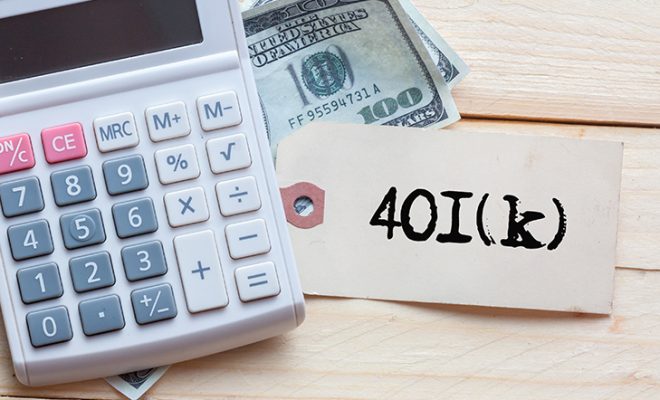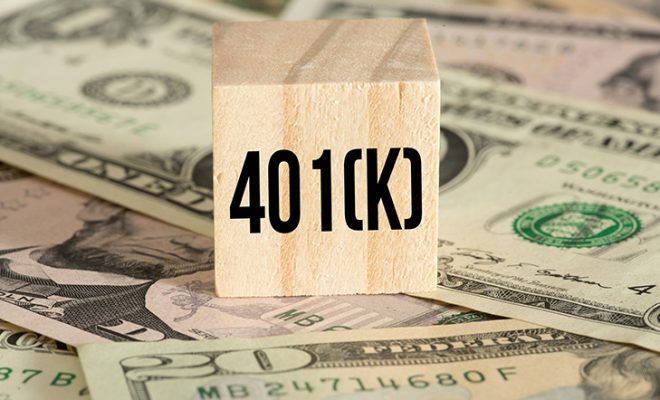How to Invest in a Roth IRA to Maximize Potential Returns

An Individual Retirement Account (IRA) is a tax-advantaged retirement account that lets you plan and save for your retirement needs. You can open an IRA at the bank, with a credit union, a life insurance company, a broker, or a mutual fund house. There are two types of IRAs – a Traditional and a Roth. Each of these has more or less the same rules. However, there is one distinction – the Roth account is not taxable in retirement while the withdrawals from a Traditional IRA are taxed as ordinary income. A Traditional IRA uses tax-deductible contributions, which is why you pay tax on your withdrawals later. On the other hand, a Roth IRA uses non-tax-deductible contributions. As a result, your withdrawals are tax-free in retirement.
A Roth IRA is a valuable financial tool if you want to plan for your retirement expenses. However, in order for it to work to your advantage, it is essential to know its rules and understand the different ways that can help you maximize your returns. For instance, you can take tax-free IRA withdrawals from a Roth account only if you hold the account for at least five years and you need to withdraw your funds after the age of 59.5. In addition to this, the contribution limits for a Roth IRA may also differ each year. If you wish to understand Roth IRA contribution limits, eligibility for contribution, withdrawal rules, and more, reach out to a professional financial advisor who can guide you on the same. These are decided by the Internal Revenue Services (IRS). For 2022, here’s how you can contribute:
| Filing status | Modified Adjusted Gross Income (MAGI) | Maximum annual contribution | |
| 1 | Single, head of household, or married taxpayers filing separately | Less than $129,000 | $6,000 or $7,000 if 50 or older |
| $129,000 up to $144,000 | Contribution is reduced | ||
| $144,000 or more | No contribution allowed | ||
| 2 | Married taxpayers filing jointly or qualifying widow(er) | Less than $204,000 | $6,000 or $7,000 if 50 or older |
| $204,000 up to $214,000 | Contribution is reduced | ||
| $214,000 or more | No contribution allowed | ||
| 3 | Married taxpayers filing separately | Less than $10,000 | Contribution is reduced |
| $10,000 or more | No contribution allowed |
Here’s how much can you put in a Roth IRA as of 2022:
- For people under the age of 50, the maximum contribution can be up to $6,000 per annum.
- For people aged 50 or above, the maximum contribution can be $7,000 per annum with an additional $1,000.
However, in order to use a Roth IRA and maximize its potential, you need to follow some strategies. Here are some of the things that can help you understand how to invest in a Roth IRA and get the most of your investment.
1. Maximize your contributions:
A lot of people undermine the power of maximizing their contributions. However, maximizing your contributions can be one of the simplest ways to ensure that you reach your goals in time and get the best possible rewards at the end of the term. As of 2022, you can contribute up to $6,000 annually. Assuming that you contribute $6,000 every year for ten years, you can save at least $60,000 in ten years. Evidently, after adding the return on your investment, your account’s value will be much more. The power of compounding will help your money double. Additionally, consistency will help you stay focused on your goal and ensure steady and assured savings. An investment of $6,000 a year for 30 years gives you an investment amount of $180,000 in total. With compound interest, this will be increased every year, resulting in a secure and financially abundant retirement.
Irrespective of how much you earn, it may help to always aim to contribute the maximum you can. If you find it hard to meet the limit, you can seek to contribute 50% of it. Slowly, you can increase to 70% or 80% and ultimately strive to invest 100% of it.
2. Pick the right investments:
The best Roth IRA accounts offer several investment options ranging from mutual funds and exchange-traded funds to stocks. The final returns from your Roth IRA will largely depend on the investment options you choose. So, you must be very careful here. Look at the past returns of all the options, compare their returns and potential for growth, look at the fees or costs of investment, and then pick an investment. When choosing an investment, it is also essential to assess your risk appetite. For instance, if you have a higher-risk appetite, you can add more stocks. However, if you wish to balance out the risk, you may pick some US Short Term Treasury funds too. This will distribute the risk and offer some stability to your money. No matter what you pick, try not to replicate your investment portfolio outside of the Roth IRA within the account. For instance, if you own the same company’s stocks outside your IRA, you can pick other sectors and companies for your IRA. This will offer diversification and more potential to earn money. In fact, diversification can be the primary thing you keep in mind when selecting the best Roth IRA investments. A diversified portfolio can be great for your overall wealth creation strategy. It lowers risk and exposes you to different market opportunities.
In addition to this, when picking the best mutual funds for Roth IRA or, for that matter, exchange-traded funds or stocks, make sure to study the market, conduct some research, and take professional help from a financial advisor if needed to ensure you make an informed choice.
3. Stick to the rules:
A Roth IRA is only effective as long as you stick to the rules. The account offers tax-free withdrawals in retirement, which happens to be one of its biggest perks. However, in order to benefit from this, you must abide by the rules and withdraw your money only after the age of 59.5. The IRS mandates that any withdrawals made before the age of 59.5 are levied a 10% penalty. Therefore, it is vital to plan your withdrawals properly. If you take out money before you are 59.5, you will lose 10% of your money to a penalty. The higher the withdrawal, the more the damage. In addition to this, you must also remember the five-year rule, according to which you must withdraw your money after at least five years of holding the account. This is also applicable to a Roth conversion. This means even if you had a Traditional IRA for 20 years and then made the switch to a Roth IRA, you would have to wait five years from the conversion date again. Sticking to the rules is an effective way to ensure that none of your hard-earned money is lost. Having said this, there are certain exceptions to the penalty rules, such as when you are making a first-time home purchase, paying for the college expenses of your children, and at the time of the birth or adoption of a child.
To conclude
A Roth IRA is a wonderful retirement tool, and even though you may have alternative options that can impact your choice, adding a Roth IRA to your investment portfolio can be beneficial in many ways. For example, you may wonder about Roth IRA vs brokerage account, and while the latter may have its own advantages and offerings, the former will give you the most significant benefit of tax savings. However, in order to really benefit from a Roth IRA, it is crucial to understand and follow its rules, be up to date with its contribution limits, be aware of the penalties and withdrawal limitations, etc. It is only when you follow all these and pick the right investment options that you can truly benefit from your IRA investment.
If you need help opening or managing your Roth IRA, you can also consult a financial advisor and accordingly start investing. Use the free advisor match service to connect with 1-3 financial advisors based on your financial requirements. All you need to do is answer a few simple questions about yourself and the match tool will find advisors that match your financial needs.
For further information on creating a suitable retirement plan for your unique financial requirements, visit Dash Investments or email me directly at dash@dashinvestments.com.
About Dash Investments
Dash Investments is privately owned by Jonathan Dash and is an independent investment advisory firm, managing private client accounts for individuals and families across America. As a Registered Investment Advisor (RIA) firm with the SEC, they are fiduciaries who put clients’ interests ahead of everything else.
Dash Investments offers a full range of investment advisory and financial services, which are tailored to each client’s unique needs providing institutional-caliber money management services that are based upon a solid, proven research approach. Additionally, each client receives comprehensive financial planning to ensure they are moving toward their financial goals.
CEO & Chief Investment Officer Jonathan Dash has been covered in major business publications such as Barron’s, The Wall Street Journal, and The New York Times as a leader in the investment industry with a track record of creating value for his firm’s clients.










